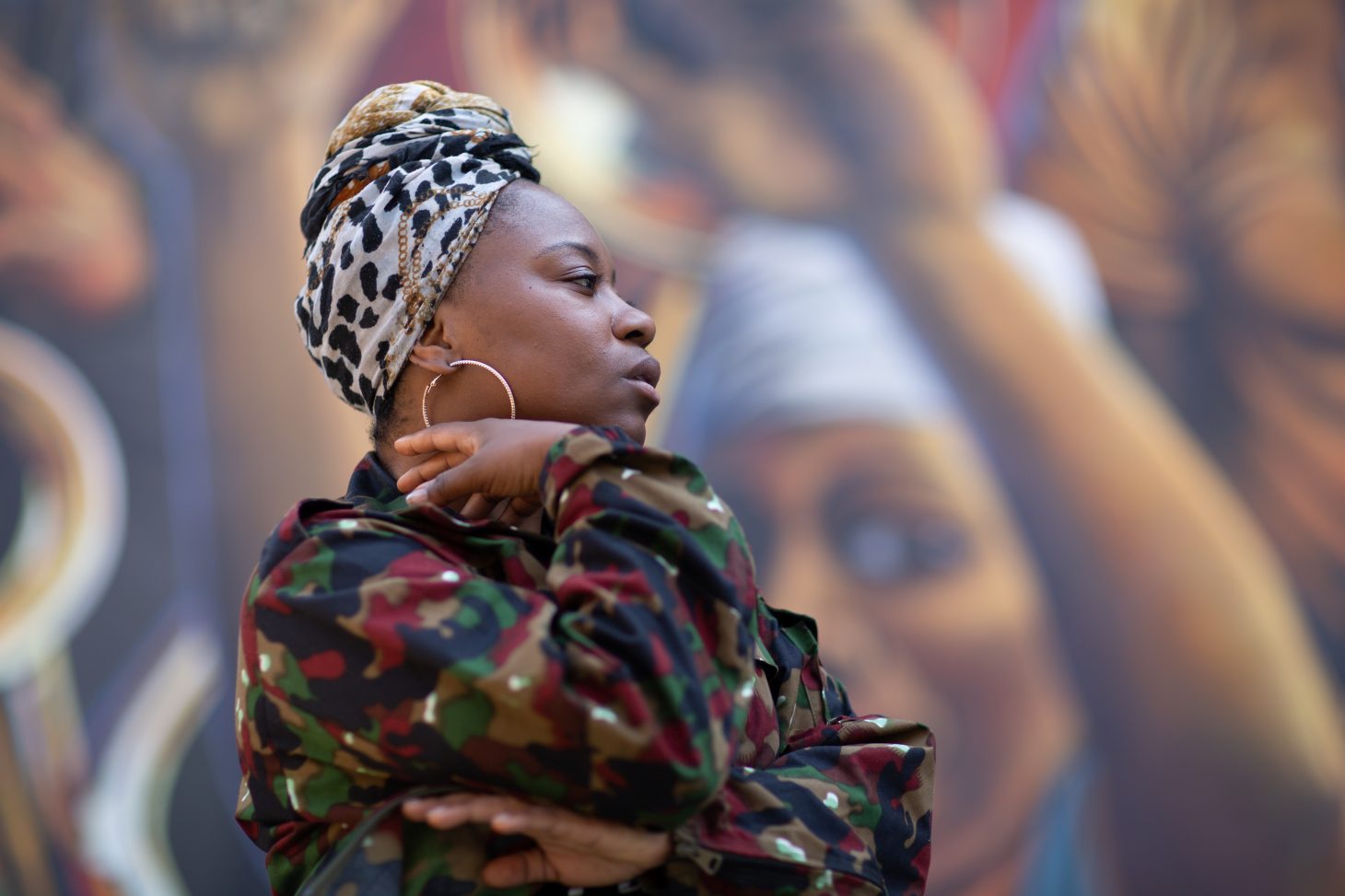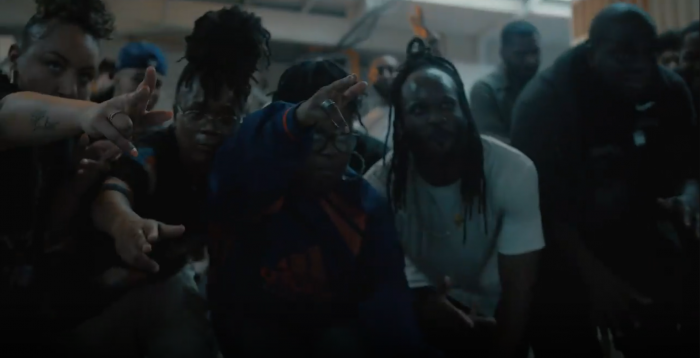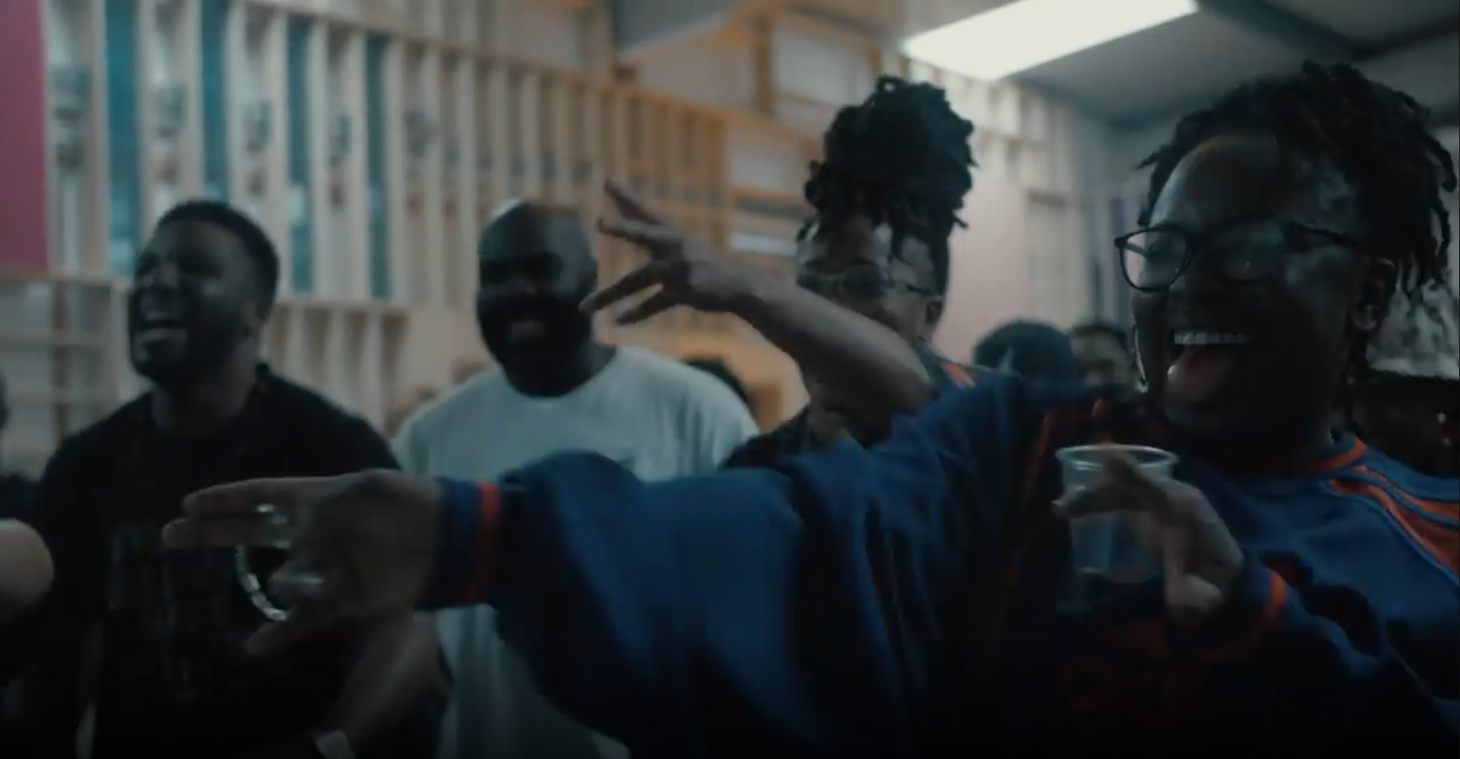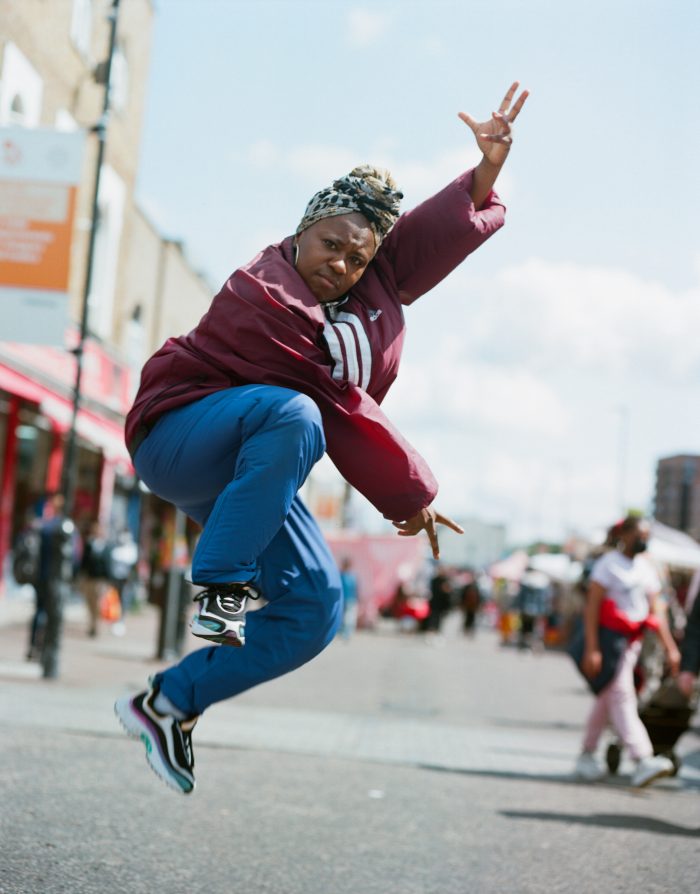
Jade Hackett, photo Nadia Otshudi
Whenever someone asks me, ‘where are you from?’, I always get a butterfly in my stomach. ‘Cause I know I’m about to say one of the most multicultural, vibrant, energetic cities in the world.
London street culture, for me, is its own sub-genre. Fully equipped with its own unique language, music and movement, all influenced by the brimming melting pot of cultures that reside here. How these elements have influenced the dance industry that I’ve been exposed to over the years is definitely something I’m continuing to monitor.

Instagram: @therealghetts
I’m an 80s baby and the 90s grew me up on ‘Apples and Pears’ market stall sellers, ‘Boss man’ corner shops, Dixy Chicken box meals, the W15 bus route from Walthamstow to Hackney, getting ‘drawn’ (chatted up) at Trocadero and ‘catchin’ a whine at Notting Hill Carnival, amongst a plethora of other specific nuances of living in this vibrant city. Fond memories of cousins taking me to Hackney march ‘all-dayers’ hearing Drum and Bass, Jungle, Garage and my teenage love, Grime. From Heartless Crew to Wiley, DJ EZ to Bruza, So Solid Crew to Kano, Ghetts and JME. Knowing that at the heart of this music, most of the pioneers (of Grime) came not just from London, but from East London (where I’m born and bred). It influenced everything about me, the way I walked, talked and dressed, and this still rings true today. The MCs on pirate radio stations, my favourite being dejavufm and me trying to tune in through the fuzz and metal wire hangers. Start recording, stop, forward and record again trying to make mixtapes to sell at school the next day. Copping the latest bootleg DVD of Lord of the Mics to watch these incredible wordsmiths all huddle in a tiny basement to unleash their poetry. Seeing the seemingly choreographed seas of gun finger salutes in the air when the DJ would pull up a tune and hearing D Double’s adlib that made the room shake. It definitely all was a moment in time that I won’t forget. Grime also introduced 140 bpm to dance artists, which was substantially faster than the regular 80/90 bpm that we were getting from American Hip Hop. We were different and setting ourselves apart with our own sound. Our movement in turn became quick, fast, heavy and powerful. Gun finger salutes, hard bounces from the neck, stamping from left to right to follow the hard bass line and, who can forget, the smooth body rolls down to the ground of Ms. Dynamite’s – “Booo”. The very personification of what London’s street culture was like at the time.

Instagram: @therealghetts
“UK Street Dance taught me these life skills well before the government school curriculum did.”
Youth club brought schools of young people using their extra-curricular time to run in parks, go on day trips out, play sporting games and join community dance clubs. That’s how I started dancing. Surrounding myself with other London based inner-city kids that all enjoyed creating art. Whether it was dancing, rapping, producing music or customing and up and eventually started our own dance groups and companies. When I think about it now, it’s incredible how entrepreneurial we all were. The young crew that I was a part of at the time, Reloaded Dance Troupe, were organising rehearsals, creating soundtracks, designing costumes from old clothes, paint, glitter and safety pins, taking bookings for performances whilst preparing marketing flyers to distribute to other spectating young people to replenish the company members. We were running full companies at sixteen at an insanely professional level. UK Street Dance taught me these life skills well before the government school curriculum did.
However, as the landscape of inner-city London started to change and gentrification began to permeate through our communities, street culture began to feel repackaged in some way and the brand became far more accessible. When Channel 4 commissioned Dubplate Drama, a leading youth production with more than 3.3 million total views, it was incredible. Watching us being represented on television in a multi-art programme whilst using our artistic skills to tell our stories. It was seriously something to run home for and the topic of conversations with all the bredrins the next day. Artists like So Solid, Dizzee Rascal and Lethal B started getting commercial success, featuring on pop artists’ albums, gaining number 1 spots in UK charts, winning Brit Awards and getting mainstream radio play like BBC1 Extra and Capital FM, I felt like we were crossing over and leading popular culture.

Jade Hackett, photo by Nadia Otshudi
These altering times naturally had an effect on the way we navigated ourselves through dance too. The benefits of this meant that Street Dance as I knew it was able to equally gain commercial notoriety. Seeing Hip Hop choreographers gaining spotlight recognition and A List employment was admirable and gave many underground dancers viable new employment options without having to change and conform to another version of Street Dance that resembled more commercial dance. We are still seeing the residual effects of that now with the rise in Drill and African music on commercial platforms. It gives way to the street dancers that vehemently train in these styles that would normally be part of the underground scene and stay there. A negative attribute to this was the overwhelming feeling of exploitation and appropriation we experienced at times in these spaces. However, watching the underground dance community come together and safeguard our small industry and reclaim our movement content back was inspiring. We were sending clear messages to fix industry practice standards around the usage of our material and treatment of performers; the work began and it is still continuing to rectify itself today. I’m really proud of us for that.
The notion of using our art to demand change and petition for justice has not been lost on us. With countless movement practitioners using their movement voice to speak up on the rising political and current affair issues, such as BLM, #MeToo, Free Palestine and Nigeria (which drew strong protests in London), we have truly taken on the late great Miss Simone’s poignant words that ‘it is an artist’s duty to reflect the times’. When Diversity’s live Britain’s Got Talent performance that covered the year 2020, including BLM support, received one of the biggest number of complaints to Ofcom, the public’s response was to award them with a BAFTA for the Must-See Moment Award. It was a moment that reflected the changing times and opinions in England and that younger voices are powerful and aren’t afraid to speak out against things that aren’t right. It gives me hope for brighter days ahead of us and for what modern London (and England) will grow to be.
There, I hope, will be far more spaces to tell our shared experiences of London through the natural storytellers that we are. With the rising respect that street art was gaining through popular culture, theatre establishments sought to collaborate with street artists from all disciplines to support them in creating notable work. Specifically watching Hip Hop companies forming associate relationships with prominent British theatre establishments further opened up access to street culture to the masses, as we were able to tell our stories through movement our way on accredited theatrical platforms. Olivier Award winning company Boy Blue Entertainment with the Barbican, ZooNation (and the awesome Kate Prince) with the Old Vic and Sadler’s Wells, Avant Garde with The Place. The powerful Dagenham talent that is Botis Seva winning an Olivier Award felt like we all won and the amazing work that comes from the formidable Breakin’ Convention stage every year gives us clear pillars to continue striving for.
To be clear, we were making this work regardless of mainstream acceptance because it’s a form of our expressionism. Whether it’s making beats in our council estate box rooms, young MCs huddled at the back of playgrounds at break times or having dance rehearsals in parks, street culture and our creativity have always been a beautiful marriage. To observe its evolution has been wonderful. I’m grateful to have been a part of it and I’m so excited to see how the next generation carries the baton from us and continues to grow our legacy. Ya Dun kno.
About Jade Hackett +
Jade Hackett is a performer, actress and choreographer.
DANCE THEATRE PRODUCTIONS include: The Pied Piper, Boy Blue Entertainment, Stratford Theatre Royal 2006 (playing Da Brat); Blaze, the international tour, Berlin and Dubai tour; Into the Hoodz, Zoonation Dance Company, London and UK tour in 2016 (playing Zapunzel); The Mad Hatters Tea Party, Zoonation Dance Company, Roundhouse 2016-2017 (playing Queen of Hearts and Cheshire Cat); Some Like it Hip Hop, Zoonation Dance Company, The Peacock Theatre 2019 (playing Kerry).
THEATRE PRODUCTIONS include: Sylvia, Zoonation Dance Company The Old Vic, 2019 (playing Jennie Churchill); Nine Night, written by Natasha Gordon, Trafalgar Studios, 2019 (playing Aunty Maggie and Lorraine); A Monster Calls, written by Sally Cookson, UK and USA tour 2020.
COMMERCIAL WORK includes: StreetDance 3D: The Movie, opposing crew; 2010 Adidas campaigns, ASOS collaboration clothing line; London Olympic and Baku European Games Opening and Closing Ceremony 2012, 2015.
